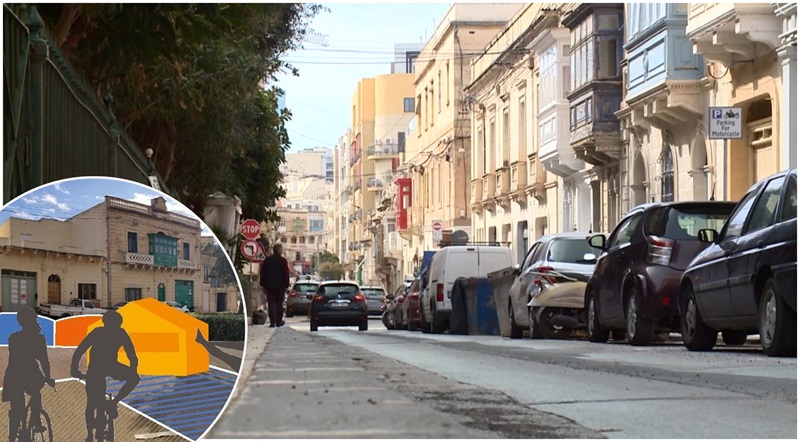Public encouraged to reduce use of vehicles in town centres
Five years ago the Local Councils Association kick-started a Slow Streets project, aimed at establishing routes in certain localities through which vehicles are driven at a reduced speed. The intention behind this plan is to enable safe passage in certain streets, whether on cycling, use of scooter or on foot.
The Association had commissioned the Studjurban company to study and plan a network of streets in different localities, where vehicle speed is reduced to make certain streets safer for residents using bicycles or scooters, or proceeding on foot.
The studies were carried out in 43 localities in Malta and Gozo, and interventions started being introduced in some of the localities. Local Councils Association President Mario Fava told TVMnews that in order for the slow streets concept to be implemented, no infrastructural changes are need, adding that the process can be reversed if it doesn’t work. Fava added that the measures are being carried out in collaboration with Infrastructure Malta and Transport Malta.
“A very advanced project in Ħal Safi, we are carrying out a study in new traffic management in the locality’s square, and this will benefit the local residents. Swieqi have also shown interest in implementing certain measures in specific streets. Likewise Cospicua and Żejtun, where there are presently a number of vehicles going through the locality, not because they need to go to Żejtun but merely to pass through the locality instead of using arterial roads.”
Mario Fava
The major challenges to having more localities implement the slow streets project are financing, as local council allocations do not cater for these types of projects. Fava also mentioned people’s mentality, with some afraid of changes, as well as councillors who should not fear that implementing such changes will cost them votes.
“It is important to have more collaboration between all of us working in different sectors, because at the end of the day we have an interest in data sharing. If I need certain data, this could be held by one agency or entity, and it does not make sense to re-invest if it is already available.”
Mario Fava
These challenges were also mentioned by architect Antoine Zammit, who carried out studies for the slow streets project. Mr Zammit told TVMnews that the biggest problems for sustainable mobility are the lack of synergy.
“Case in point, we are working on a sustainable urban mobility plan, SUMP, which has a base of regions identified by the NSO on a European basis of geographical distribution of regions, the Planning Authority’s local plans have local plan areas that do not tally with these regions, then you have administrative regions, regional councils, all of which are different.”
Architect Antoine Zammit
Mr Zammit concluded that above all, there has to be political will for a difference to be made, mentioning that in large cities abroad, like Paris and Barcelona with much bigger traffic problems, they are also managing to implement projects to reduce vehicles from city centre, increase green infrastructure and add to pedestrian areas.
via TVM News



